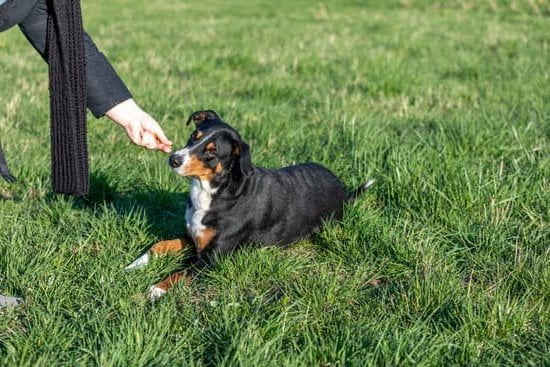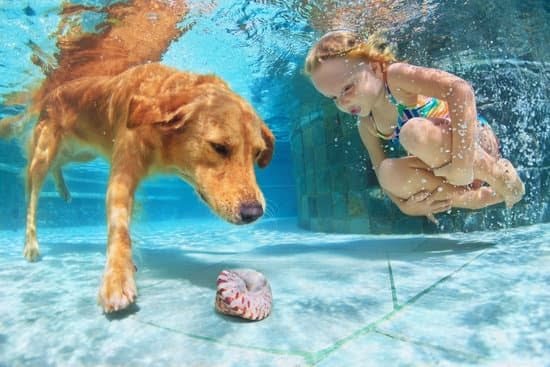Are you wondering how to train a dog to keep on costumes? Dressing up your furry friend in costumes can be a fun and adorable way to celebrate special occasions like Halloween or just to add some extra cuteness to your everyday walks. However, getting your dog comfortable with wearing costumes may require some training and patience.
Understanding your dog’s behavior and body language is essential when it comes to training them to wear costumes. Positive reinforcement training methods can play a significant role in making the process enjoyable for both you and your pet. Additionally, selecting the right costumes that are comfortable and safe for your dog is crucial for their overall well-being.
This article will provide you with practical tips and strategies to help you train your dog to keep on costumes, while also addressing common problems that may arise during the costume-wearing process. Whether you’re looking for Halloween costume ideas or simply want to add some festive flair to your pet’s wardrobe, this guide will walk you through every step of the training process.
So, get ready to unleash your creativity and bond with your furry pal through the joy of dressing them up in adorable outfits.
Understanding Your Dog’s Behavior and Body Language
When it comes to training your dog to keep on costumes, it is important to first understand their behavior and body language. Dogs communicate with us through their body language, so it’s essential to know what signs to look for when they are feeling uncomfortable or stressed.
Here are some key behaviors and body language cues to keep in mind when training your dog:
- Tail position: A relaxed dog will typically have their tail in a neutral position. If they are feeling stressed or anxious, their tail may be tucked between their legs.
- Ears: Pay attention to the position of your dog’s ears. Perked up ears indicate alertness, while flattened ears can signal fear or anxiety.
- Eyes: Soft and relaxed eyes show that your dog is comfortable, while wide eyes or whale eye (when you can see the whites of the eyes) can indicate stress.
- Body posture: A loose and wiggly body posture indicates happiness and comfort, while a tense or stiff body posture may signal discomfort.
By understanding your dog’s behavior and body language, you will be better equipped to train them effectively and ensure that they are comfortable wearing costumes. It is important to always pay attention to your dog’s cues during training and make adjustments as needed.
Positive Reinforcement Training Methods
When it comes to training your dog to keep on costumes, positive reinforcement is key. This training method focuses on rewarding your dog for good behavior, rather than punishing them for mistakes. By using positive reinforcement, you can create a positive association between wearing costumes and receiving something enjoyable, such as treats or praise.
Clicker Training
One effective form of positive reinforcement training is clicker training. This method involves using a small device called a clicker to make a clicking sound when your dog performs the desired behavior, followed by giving them a treat. Over time, your dog will learn to associate the click with something positive, making them more likely to repeat the behavior.
Desensitization and Counterconditioning
Another important aspect of positive reinforcement training for costume-wearing is desensitization and counterconditioning. This involves gradually exposing your dog to the costume in a positive way, while also changing their emotional response to it. Start by simply placing the costume near your dog during meal times or playtime, and gradually progress to having them wear it for short periods of time while receiving rewards.
Consistency and Patience
Consistency and patience are crucial when using positive reinforcement training methods. It’s important to be consistent in rewarding your dog every time they exhibit the desired behavior, whether it’s standing still while wearing the costume or walking around in it without trying to remove it. Additionally, be patient with your dog as they adjust to wearing costumes – every dog will progress at their own pace, so celebrate even small victories along the way.
Overall, employing positive reinforcement methods such as clicker training and desensitization can help make the process of training your dog to keep on costumes a fun and rewarding experience for both you and your furry friend.
Selecting the Right Costumes for Your Dog
When it comes to dressing up your dog in costumes, it’s important to choose the right outfit that is comfortable and safe for your furry friend. Here are some tips for selecting the right costumes for your dog:
1. Consider your dog’s comfort: Before choosing a costume, consider your dog’s comfort. Make sure the fabric is not too tight or constricting, and that it doesn’t have any small parts that could be a choking hazard.
2. Size matters: Just like humans, dogs come in different shapes and sizes. When selecting a costume, make sure it fits properly and doesn’t restrict their movement or cause discomfort.
3. Safety first: Avoid costumes with small buttons, dangling decorations, or anything that could be chewed off and swallowed by your dog. Opt for costumes with simple designs and secure fastenings.
4. Consider the weather: If you plan to dress up your dog for outdoor events or Halloween, consider the weather conditions. Make sure the costume is appropriate for the temperature and won’t cause your dog to overheat or get too cold.
By taking these factors into consideration, you can ensure that your dog stays comfortable and safe while wearing their costume, allowing them to fully enjoy the fun of dressing up.
Gradual Desensitization to Wearing Costumes
Understanding Your Dog’s Comfort Level
Before you can begin desensitizing your dog to wearing costumes, it’s important to understand their comfort level. Some dogs may be naturally more tolerant of wearing clothing, while others may find it stressful or uncomfortable. Take note of your dog’s body language when introduced to a costume – are they relaxed or tense?
Do they try to remove the costume or do they seem indifferent? Understanding your dog’s behavior will help you gauge how much work will be needed for desensitization.
Starting Small and Gradual
Once you’ve assessed your dog’s comfort level, start desensitization by introducing them to the costume in small, gradual steps. Begin by simply placing the costume near your dog during their downtime, allowing them to investigate and sniff at their own pace.
Once they seem comfortable with the presence of the costume, gradually increase exposure by draping it over them for short periods of time. Always observe their body language and adjust accordingly – if they seem stressed or try to remove the costume, take a step back and go slower in the process.
Positive Reinforcement Through Treats and Rewards
During the desensitization process, use positive reinforcement training methods to associate wearing costumes with positive experiences. Whenever your dog shows tolerance or acceptance of the costume, reward them with treats, praise, and playtime. This will create a positive association with the costume and encourage them to feel more comfortable when wearing it in the future. Remember to be patient and consistent throughout this gradual process – every dog will have their own pace in getting used to wearing costumes.
Introducing Wearing Costumes During Playtime and Walks
Once your dog has become comfortable wearing costumes at home, it’s time to introduce them to wearing costumes during playtime and walks. This step is crucial in ensuring that your dog associates wearing costumes with positive experiences and doesn’t feel stressed or anxious when wearing them outside the house.
Start by choosing an appropriate costume for the outdoor activity. If you’re going for a walk in a crowded area or where there might be other dogs, consider selecting a costume that doesn’t restrict your dog’s movement or vision. It’s important to prioritize your dog’s comfort and safety when choosing costumes for outdoor use.
During the initial outdoor sessions, keep the playtime or walk short to gauge your dog’s reaction to the costume in a new environment. Use treats and toys to distract and reward your dog while they are wearing the costume. Gradually increase the duration of outdoor activities while monitoring how your dog responds to wearing costumes in different scenarios.
Remember that some dogs may take longer than others to adapt to wearing costumes outdoors. Be patient and always pay attention to their body language for any signs of discomfort or stress. The goal is for your dog to enjoy dressing up in costumes, so make sure that they are having fun during these outdoor sessions.
| Outdoor Activity | Tips |
|---|---|
| Playtime | Keep it short initially; use treats and toys as rewards |
| Walks | Choose a comfortable costume that allows freedom of movement; monitor body language for signs of stress |
Tips for Keeping Costumes on During Halloween or Other Events
One of the biggest challenges in dressing up your dog in costumes is keeping the outfit on, especially during festive events like Halloween. Here are some tips to help ensure that your pup stays comfortable and safe while wearing a costume during these events.
First, it’s important to select a costume that fits your dog properly. Avoid costumes that are too tight or too loose, as this can cause discomfort and restrict movement. Look for costumes specifically designed for dogs, as they will have adjustable straps and openings for harnesses or leashes.
Another tip is to gradually introduce the costume to your dog and associate it with positive experiences. Use treats and praise when putting the costume on, and gradually increase the duration that your dog wears it over time. This will help your pup feel more comfortable and less anxious about wearing a costume.
During events like Halloween, it’s essential to keep a close eye on your dog while they are in costume. Make sure that the outfit doesn’t have any small parts or accessories that can be chewed off and swallowed. Additionally, if your dog seems stressed or uncomfortable in the costume, don’t force them to wear it. Always prioritize their well-being over their appearance.
| Tip | Description |
|---|---|
| Proper Fit | Avoid costumes that are too tight or too loose |
| Gradual Introduction | Associate the costume with positive experiences using treats and praise |
| Supervision during Events | Keep an eye on your dog while they are in costume to ensure their safety and comfort |
Troubleshooting Common Problems With Costume-Wearing
When it comes to dressing up your dog in costumes, there can be some common problems that may arise. One of the most common issues is that the costume may be uncomfortable for your dog, causing them to try and remove it or act unusually. To troubleshoot this problem, it’s important to select costumes made from comfortable and breathable materials that don’t restrict your dog’s movement or cause irritation to their skin.
Another common problem when training a dog to keep on costumes is their reaction to certain accessories or elements of the costume. For example, if your dog doesn’t like wearing hats or headpieces, they may constantly try to remove them. In this case, it’s best to start with simple costumes without too many extra accessories and gradually introduce these elements over time using positive reinforcement techniques.
Some dogs may also have a fear of wearing anything new or different, which can make them resistant to wearing costumes. If your dog is showing signs of anxiety or fear when wearing a costume, it’s important to proceed with patience and understanding. Gradually desensitize them to the costume by introducing it in short increments and pairing it with positive experiences such as treats and playtime.
By troubleshooting these common problems with costume-wearing, you can ensure that both you and your dog have an enjoyable experience when dressing up for Halloween or any other event. With patience and persistence, you can train your dog to keep on costumes while keeping them comfortable and happy at the same time.
Bonus Section
Dressing up your dog in costumes can be a fun and creative way to bond with your furry friend, as well as to add an extra element of excitement to special events or holidays. While there are plenty of adorable pre-made costumes available for purchase, creating your own DIY costume for your dog can make the experience even more personal and unique.
In this bonus section, we’ll explore some simple and creative costume ideas that you can easily make at home for your beloved canine companion.
One popular DIY costume idea is to transform your dog into a superhero. This can be achieved by creating a superhero cape using a piece of fabric in a bold color, such as red or blue, and adding a superhero emblem or logo to the back of the cape. You can also make a matching mask using felt or fabric to complete the look.
Another fun idea is to turn your dog into a food item, such as a hot dog or sushi roll. Using felt or foam materials, you can create the toppings and embellishments for the costume, while ensuring that it’s comfortable and safe for your dog to wear.
For those who want to celebrate special occasions or themes, you can also create costumes that reflect popular characters or cultural references. Whether it’s dressing up your dog as a pineapple for a tropical-themed party, or turning them into a famous movie character for Halloween, there are endless possibilities when it comes to DIY dog costumes.
The key is to ensure that the costume is comfortable and non-restrictive for your dog, allowing them to move and play freely while wearing it. With some creativity and basic crafting skills, you can have fun designing and making custom costumes that will delight both you and your furry friend.
Conclusion
In conclusion, dressing up your dog in costumes can be a fun and enjoyable experience for both you and your furry friend. By understanding your dog’s behavior and using positive reinforcement training methods, you can train them to feel comfortable and even enjoy wearing costumes. It is important to select the right costumes for your dog, considering their comfort and safety. Gradual desensitization and introducing costume-wearing during playtime and walks can help acclimate your dog to wearing costumes.
Additionally, during Halloween or other events, there are tips you can follow to keep the costumes on your dog, such as ensuring a proper fit and supervising them while wearing the costume. If you encounter any problems with costume-wearing, troubleshooting methods can help address these issues. And for some added fun, consider trying out some DIY costume ideas for your dog to showcase their personality and style.
Ultimately, the most important aspect of training your dog to keep on costumes is to ensure that they are happy, comfortable, and having fun. Remember to always prioritize your dog’s well-being and enjoyment when it comes to dressing them up in costumes. With patience, positive reinforcement, and careful selection of costumes, you can both have a great time exploring the world of canine fashion together.
Frequently Asked Questions
Why Doesn’t My Dog Like Costumes?
Dogs may not like costumes for a variety of reasons. Some dogs may feel restricted or uncomfortable in clothing, especially if it is tight or constricting. Others may simply not like the sensation of having something foreign on their bodies. Additionally, some dogs may find costumes alarming if they drastically change their appearance, leading to fear or anxiety.
How Do I Get My Dog to Put on Clothes?
Getting your dog to put on clothes can be a gradual process that requires patience and positive reinforcement. Start by introducing your dog to the clothing item in a non-threatening environment and reward them for showing interest or approaching it.
Gradually increase their comfort level by allowing them to sniff, touch, and eventually wear the clothing item with positive reinforcement such as treats and praise.
Is It OK to Put Dogs in Costumes?
Whether it’s okay to put dogs in costumes depends on the individual dog and the specific costume. It is important to consider the comfort and well-being of the dog before dressing them up.
If a costume fits well, does not restrict movement or cause discomfort, and does not have any small parts that could be chewed off, then it may be okay to dress up your dog for special occasions. However, it’s important to always monitor your dog while they are wearing a costume and remove it if they show any signs of distress or discomfort.

Welcome to the blog! I am a professional dog trainer and have been working with dogs for many years. In this blog, I will be discussing various topics related to dog training, including tips, tricks, and advice. I hope you find this information helpful and informative. Thanks for reading!





